Lyft is rolling out a new driver pay structure where you will get paid for pickup time, but what does it mean for full- and part-time drivers? Senior RSG contributor Jay Cradeur shares this new pay structure and how it will affect driver earnings.
Recently, I was invited to participate in a phone call with Lyft to learn about the components of a new driver pay structure. This new driver pay structure is currently in beta in Seattle, and it will be expanding to five more markets soon.
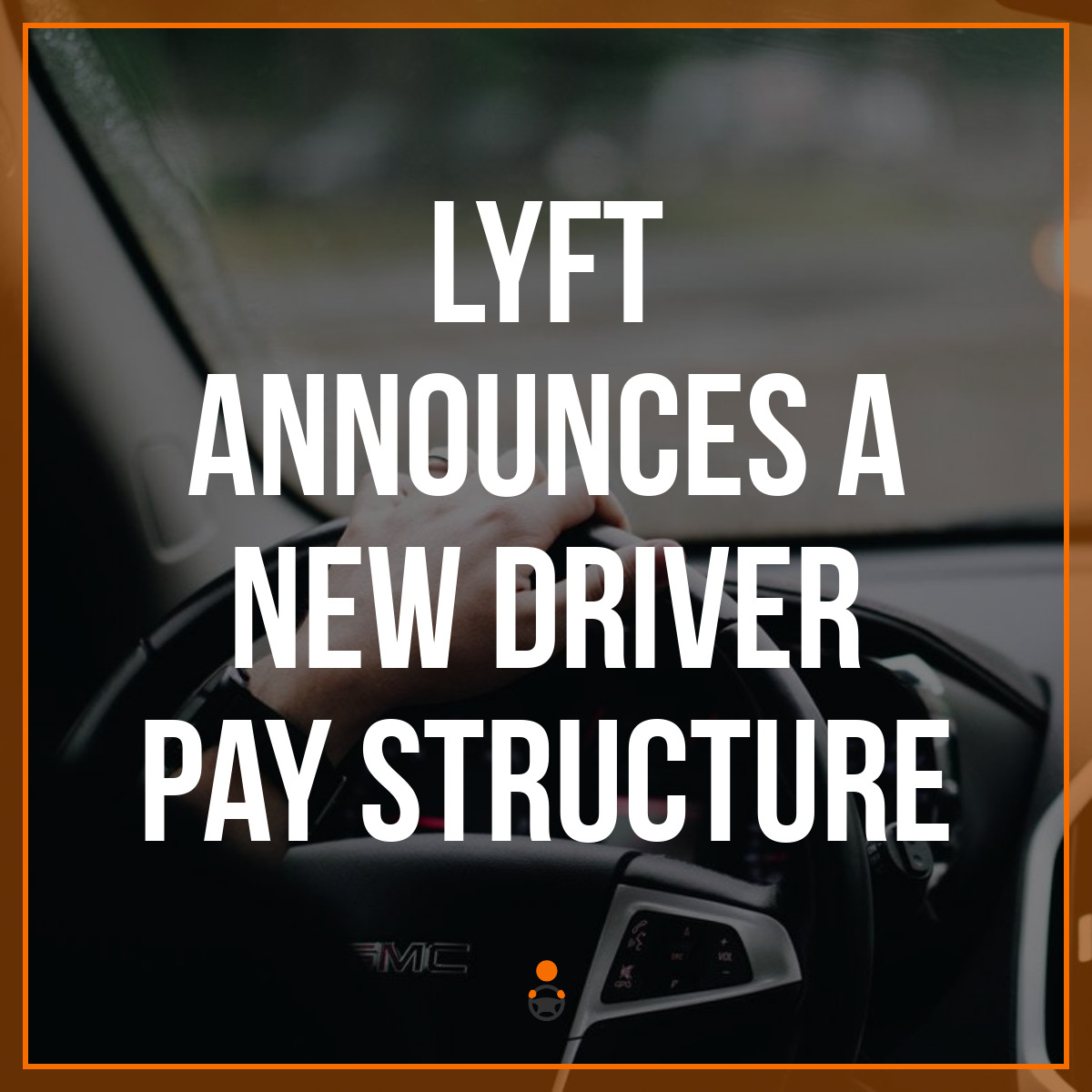
Based on the feedback from these trials, this new driver pay structure program may expand to the rest of the country. This article will provide the basic components of the new pay structure as well as my initial response.
Lyft Provides Some Interesting Statistics around Earnings
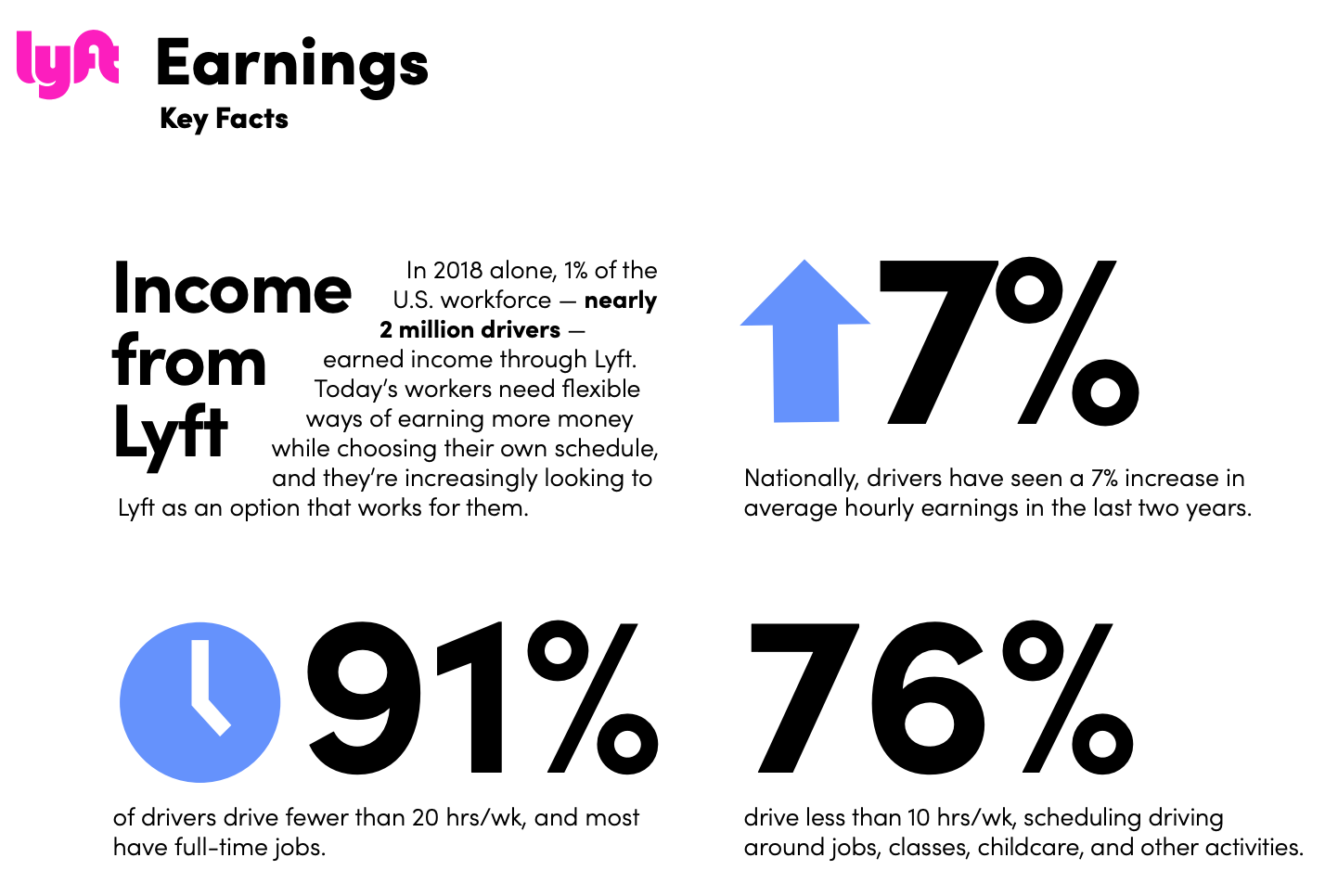
Based on surveys conducted by The Rideshare Guy, we already knew most drivers are part-time drivers. However, I had no idea that the statistics were so skewed to part-time drivers.
According to Lyft, 91% of drivers work less than 20 hours per week. Three out of four drive less than 10 hours per week. Drivers like me, drivers who drive more than 20 hours per week, account for less than 10% of all drivers in the United States.
The other statistic presented here is Lyft’s assertion that drivers have seen a 7% increase in hourly earnings in the past two years. I was dismayed by this claim, and I was told this statistic was based on the entire United States, comparing two years ago to today.
I do understand that the addition of the destination filter has helped drivers increase earnings, reducing the amount of deadhead driving. However, we still have the nasty fact that both Uber and Lyft reduced the per mile rate in most markets last year, while only minimally increasing the per minute rate. That has certainly led to a decrease in driver earnings.
A 7% increase is a “hard to believe” statistic. However, it has no real bearing on the new pay structure. Let’s move on.
Average Rideshare Driver Earnings Per Hour 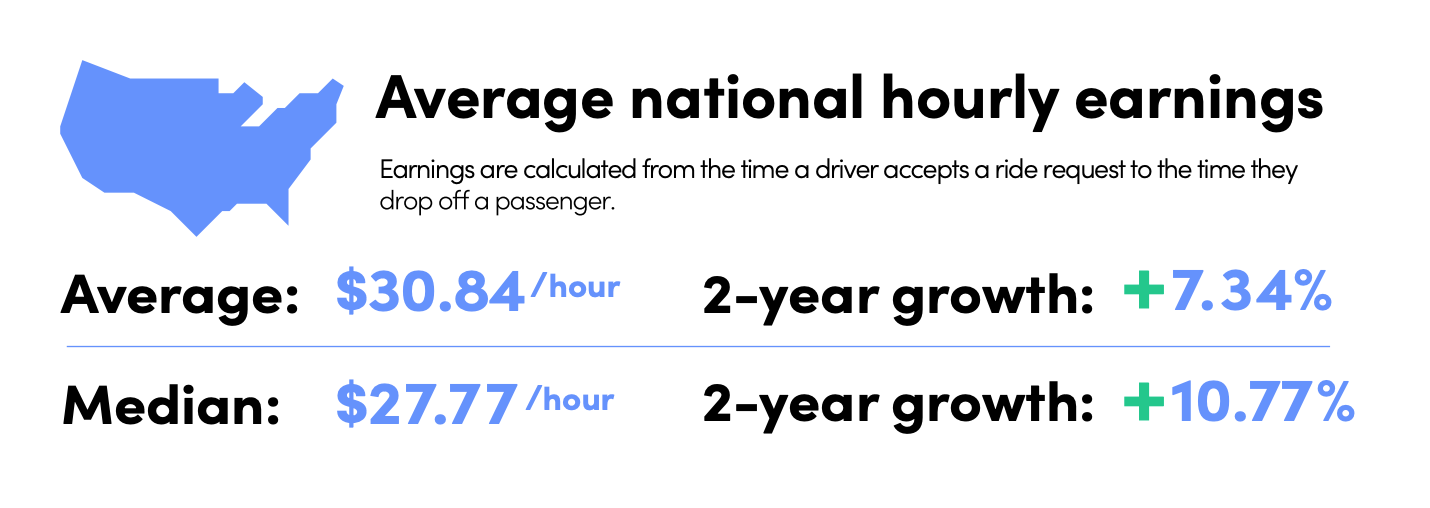
Here’s another graphic Lyft likes to share but this average hour earnings statistic is misleading in my mind. $30.84 per hour is only for the time a driver gets a ping, drives to make the pick-up, and then drives the passenger to the final destination. It does not include the time a driver spends driving around waiting for a ping. Therefore, it is not a very useful statistic, since we drivers do drive around (or drive to strategic areas) waiting for a ping and Lyft has lots of incentive to put as many drivers on the road as possible without real penalty.
That time can add up to a significant amount of time, which will dramatically reduce the earnings per hour.
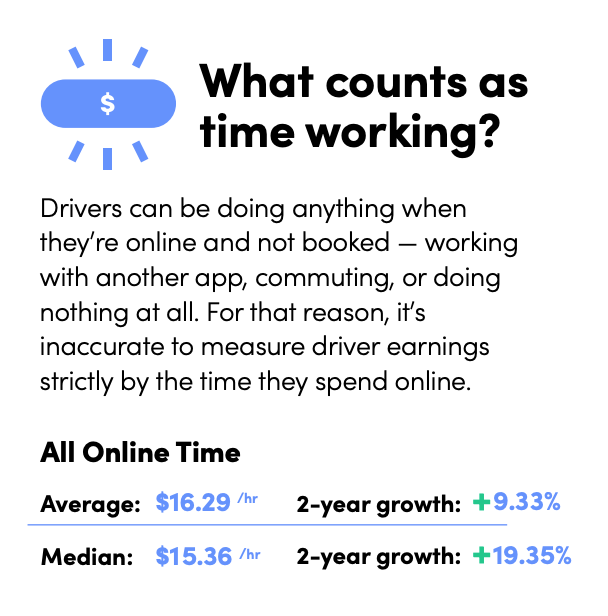
The above graphic shows a more realistic average per hour earnings. This is about half of the previous earnings figure, which means the average driver spends about approximately half his or her time driving around, waiting for a ping.
This seems reasonable given that some markets, such as San Francisco, will have less time between rides, while other markets with less demand will have significantly longer wait times between rides.
A Change In Pay Philosophy
According to Lyft, drivers value time over miles. Perhaps this is true for some drivers, but I can tell you it is not true for me. I value miles over time. What this means is I prefer to earn a premium for taking passengers on a long trip. Lyft is asserting that most drivers want to be paid a premium just for getting a ride with no discernment for the length of the ride or the traffic conditions.
As a result of this, last year we saw Lyft (and Uber) cut the per mile rate and increase the per minute rate. As I wrote about this development last year, this strategy led to a 4 % decrease in my weekly pay.

The good news about the new pay structure, is that when it hits your market, you will start earning once you accept a ride. Whether you accept a ride that is five minutes away or a ride that is 30 minutes away, you will get paid for the time and distance for the entire drive to pick up the passenger. That seems like a good thing.
And, of course, you will continue to get paid from the point of the pick up to the passenger drop off.
What Are The Lyft New Driver Pay Structure Rates?
We have rate information so far for a couple of markets. Here you can see the current offering in Seattle: 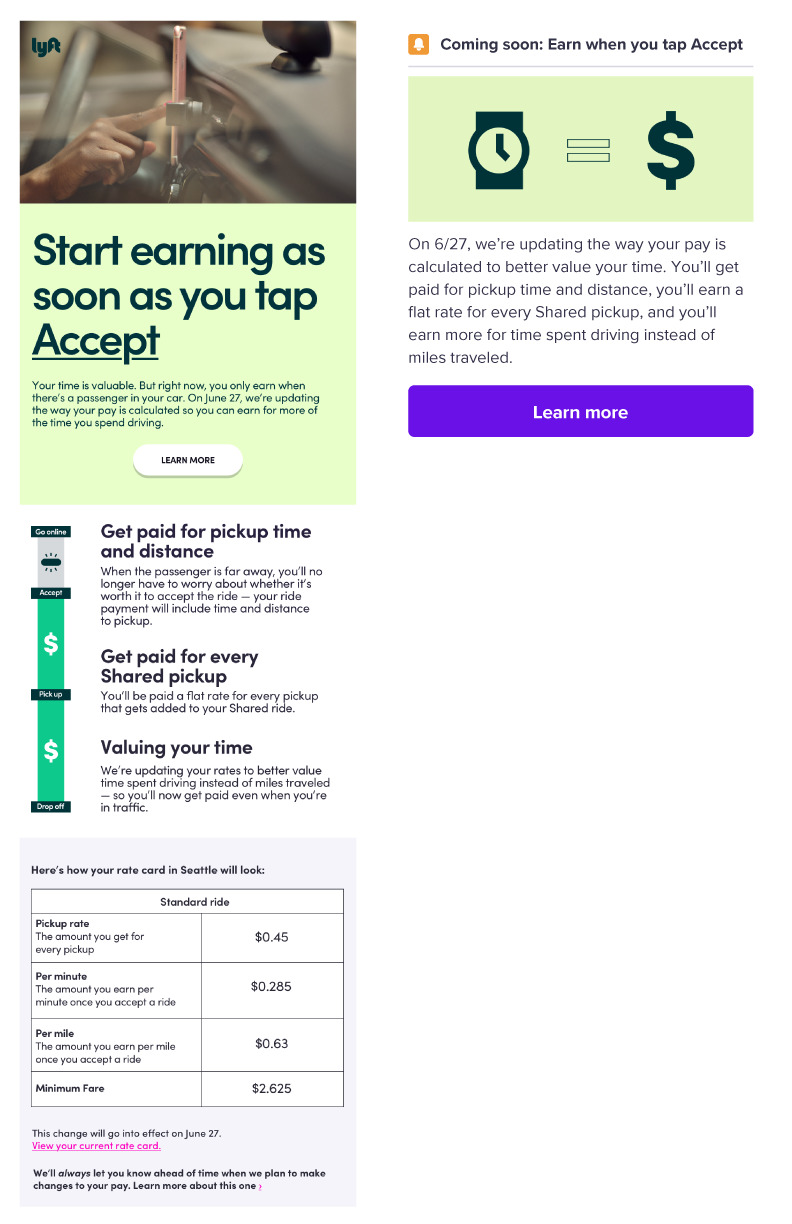
We have also confirmed with Lyft the updated rates for Honolulu. I took the new rates and compared them to current rates and what we see is a dramatic decrease in the base rate, minimum rate and the per mile rate while seeing an increase in the per minute rate.
The detail we must remember is that in this new scenario, drivers are getting paid from the moment they accept the ride. These rates apply to not only driving the passenger but also for driving to pick up the passenger.
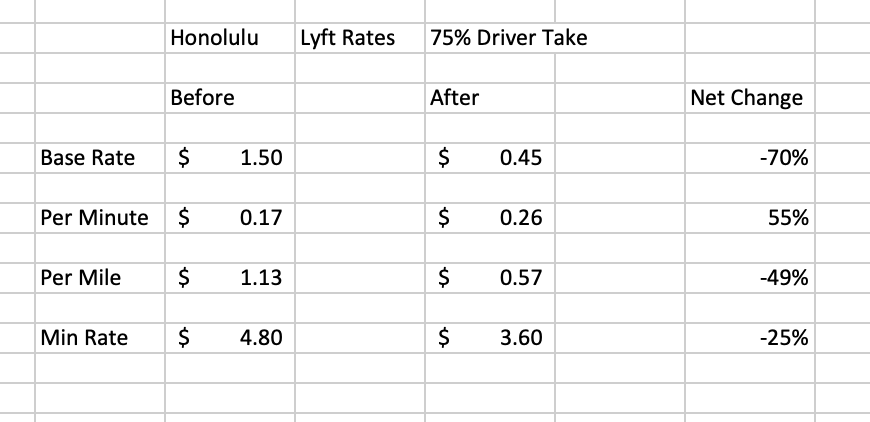
Let’s now look at three examples of how this would hypothetically impact a driver’s pay. 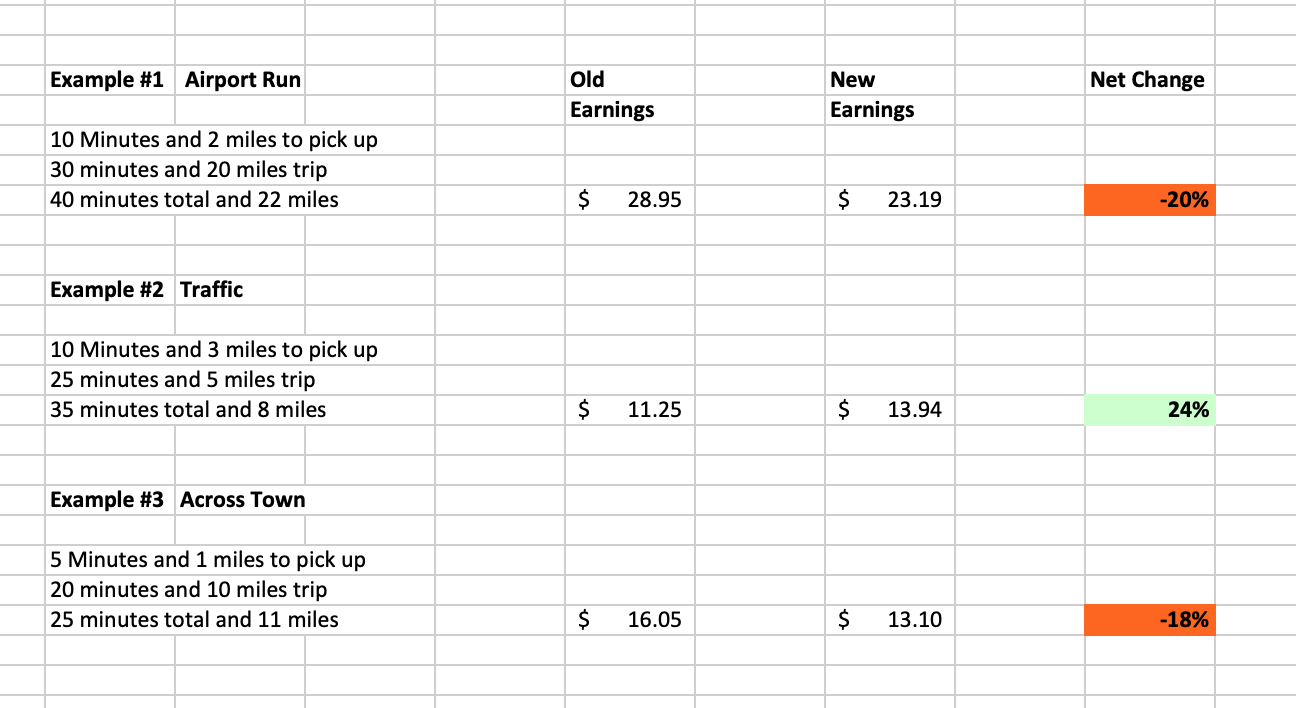
There are a few takeaways from these examples. If you are in a market that requires you to drive a long way to make a pick up, then this new pay structure may benefit you. As we see in Example #2, with a 10 minute pick up, and a slow 5-mile trip, the driver pay increased by 24%. However, in a market such as San Francisco, where pick up times are rarely more than 5 minutes, this new pay structure would be devastating. As we see in Example #3, the pay cut is 18%. And further, in Example #1, a simulated airport run, the pay cut is a whopping 20%.
If and when this pay structure rolls out to more markets, we will do a more detailed analysis of its impact on a full week of driving. But it’s important to note the first few markets it’s rolling out to are smaller markets where the ETAs to pick up a passenger are likely higher. My guess/hope is that Lyft would not drop the rates nearly as much in a market like SF where the pick-up times are a lot shorter.
Where Is This Program Launching?
The program is being tested in Seattle. Here are the initial markets from Lyft:

This program is now also available in:
- Las Vegas
- Madison, WI
- Raleigh-Durham, WI
- Austin, TX
- Nashville, TN
- Charlotte, NC
- Milwaukee, WI
- Minneapolis, MN
- Phoenix, AZ
Huge Benefit For Lyft
The benefits to Lyft of this pay restructuring are obvious and two-fold. First, I assert this restructuring will lead to less pay to drivers. Even if it is just a 5% decrease, that is a huge amount of money to be added to Lyft’s bottom line. Neither Lyft nor Uber will make a pay change that will pay drivers more. Nope, not going to happen!
The second benefit is that fewer drivers will cancel on rides. In my home market of San Francisco, I currently cancel on all rides that have a pick up of 11 minutes or more. I would never drive 30 minutes to make a pick-up. With this new structure, it does not matter if I drive 30 minutes since I am getting paid the same for the pick up as for the drop-off. Fewer cancellations lead to better customer experience and more satisfied passengers. This will be good fodder for Lyft’s marketing team. It is clever.
Advertisement: Never pay full price for gas again. Download the GetUpside app and start saving on every gallon of gas today.
My Response to the New Driver Pay Structure
I don’t like this! This feels like another cut at driver compensation. This move by Lyft further diminishes the skills that I have honed over the years to maximize my revenue. This move caters to all the ants who turn on the app and hope for a ride. They don’t care if they get a long ride or a short ride. They don’t know where to drive to shorten wait times, and they don’t make any distinction between high traffic times versus light traffic times. They just put in their 10 or 15 hours. Driving is not a strategic game for part-timers. Rather driving for Uber or Lyft is a way to earn a few bucks. For me, any pay cut is significant.
Key Takeaways
This is an extension of the same pay restructuring we saw at the end of last year. Both Uber and Lyft began paying less for miles and more for time. Now Lyft is testing out a new program that will pay even more for time and less for miles.
Unfortunately, you won’t know the rates until this program comes to your market. Once it comes to my market, I will do a thorough analysis and share the results. Until then, we will have to wait. Be safe out there.
Drivers, what do you think of Lyft’s new driver pay structure?
-Jay @ RSG




